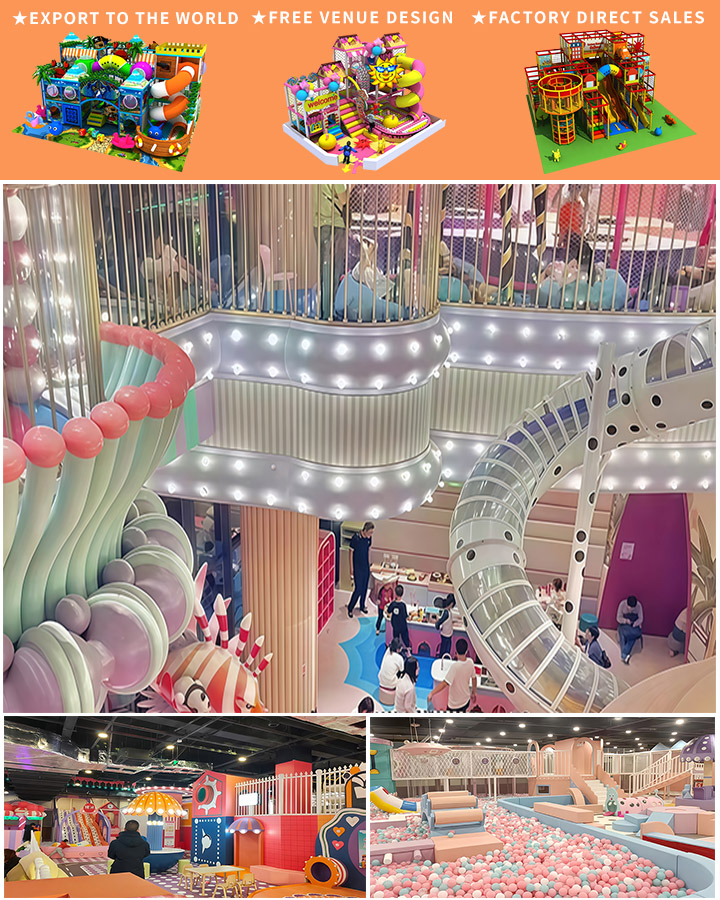In the bustling world of modern living, finding space for children to play can often be a challenge. However, with some creativity and thoughtful planning, even small indoor spaces can be transformed into delightful playgrounds that cater to the needs of energetic kids. This guide will explore various aspects of setting up an indoor soft play area, from choosing the right equipment to optimizing limited space for maximum fun and safety.
Why an Indoor Playground?
An indoor playground is more than just a convenient alternative to outdoor play; it offers numerous benefits:
- Safety First: Indoor environments are generally safer as they are free from traffic, harsh weather, and unfamiliar people.
- Year-Round Fun: Regardless of the season or weather conditions, children can enjoy their playtime indoors.
- Controlled Environment: Parents can supervise and ensure that the play area remains clean and hygienic.
Designing a Compact Indoor Play Area
When you have limited space, every inch counts. Efficient design is crucial in creating a functional and enjoyable play area. Here are some tips:

- Multi-Functional Furniture: Opt for furniture that serves multiple purposes. For example, consider a climbing wall that doubles as a storage unit or a slide that can be retracted when not in use.
- Vertical Space Utilization: Take advantage of vertical space by installing shelves, hanging bridges, or wall-mounted toys.
- Foldable Equipment: Choose foldable or collapsible items like tunnels or small obstacle courses that can be easily stored away when needed.
Essential Indoor Playground Equipment
To create an engaging and dynamic play environment, consider incorporating the following types of equipment:
- Soft Play Structures: These include foam blocks, soft mats, and cushioned climbing walls. They provide a safe surface for children to jump, crawl, and explore without the risk of injury.
- Interactive Toys: Incorporating interactive elements like musical instruments, sensory panels, or electronic games can enhance the learning and developmental experience.
- Imaginative Play Sets: Small kitchens, doctor’s kits, or miniature towns can stimulate imaginative play and role-playing activities.
Optimizing School Playgrounds
For schools with limited outdoor space, converting underutilized indoor areas into play zones can be highly beneficial. Classrooms, gymnasiums, and hallways can be repurposed during non-use hours with portable equipment such as:
- Inflatable Bounce Houses: Great for physical activity and fun.
- Pop-Up Obstacle Courses: Easy to set up and provides an excellent opportunity for physical exercise and teamwork.
- Educational Play Kits: Interactive STEM kits and science experiment sets encourage learning through play.
Safety Measures
While designing an indoor playground, safety should always be a top priority. Here are some key considerations:
- Non-Toxic Materials: Ensure all materials used are free from harmful chemicals and safe for children.
- Proper Supervision: Constant adult supervision is essential to prevent accidents.
- Regular Maintenance: Regularly check all equipment for wear and tear and maintain a clean environment to prevent the buildup of germs and bacteria.
Conclusion
Creating a small indoor playground for children is a fantastic way to ensure they have a safe, stimulating, and fun environment to play in. With careful planning and the right equipment, even the smallest spaces can become vibrant hubs of activity and joy. So, get creative and transform your indoor areas into the ultimate playground for your little ones!




